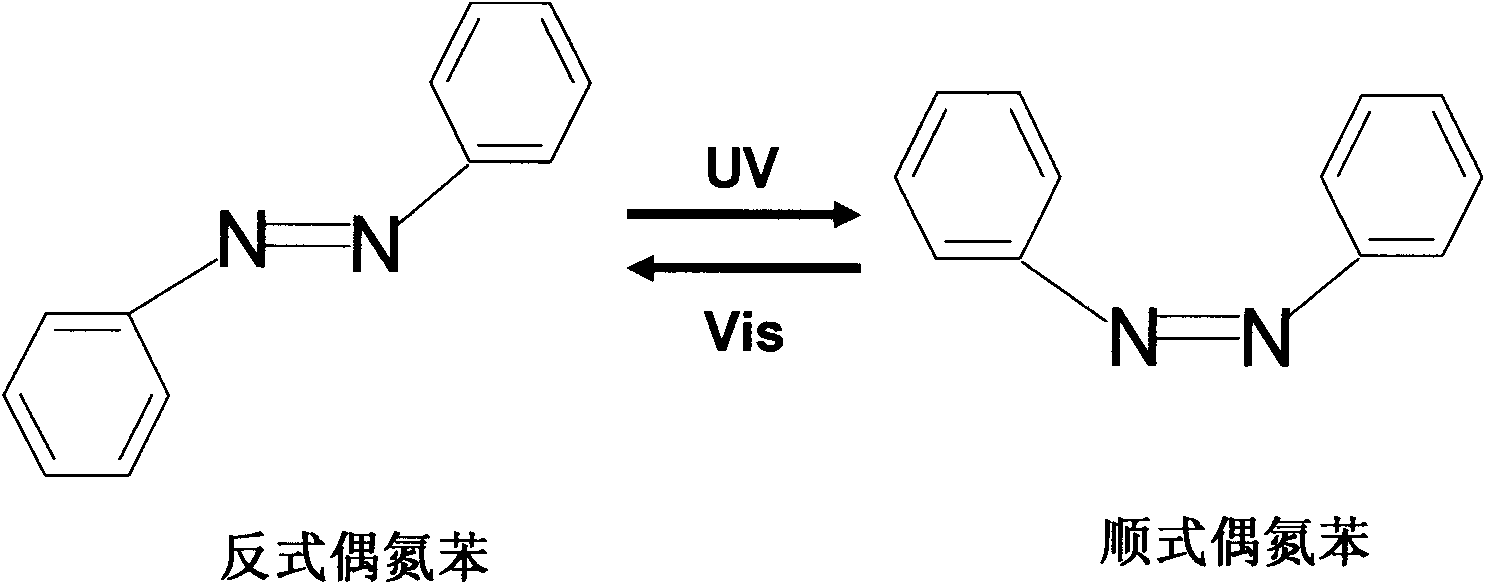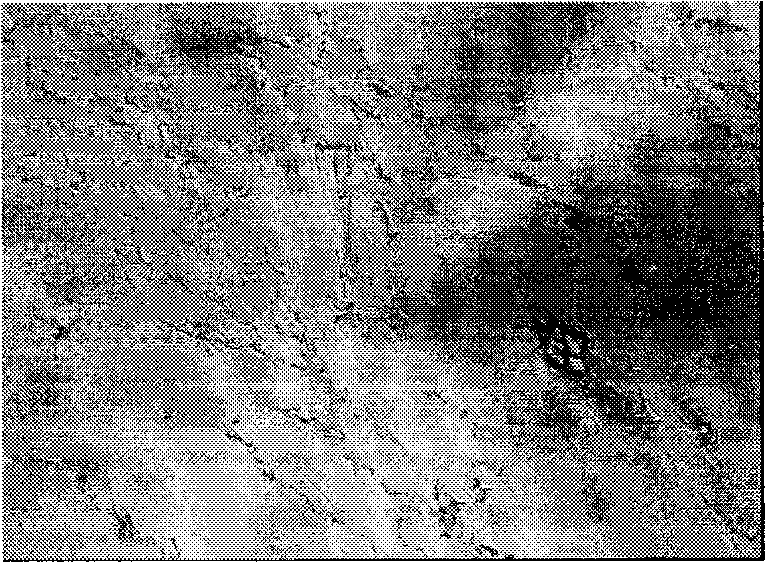Method for regulating optical performance of liquid crystals by using azobenzene
A technology using azobenzene and liquid crystal optics, applied in the field of photosensitive materials and liquid crystal materials, can solve the problem of high energy consumption
- Summary
- Abstract
- Description
- Claims
- Application Information
AI Technical Summary
Problems solved by technology
Method used
Image
Examples
Embodiment 1
[0028] Azobenzene, binaphthyldiol and p-octylbiphenylcyanide (8CB) are mixed evenly according to the mass ratio of 10%: 1%: 89%, poured into a parallel-oriented liquid crystal cell, and at a room temperature of 21 degrees Celsius, The liquid crystal cell was irradiated with ultraviolet light with a wavelength of 365 nm (10 mW / cm2) for 480 seconds, and placed under natural light for 3 hours to recover.
[0029] Observe the changes of the liquid crystal texture with the ultraviolet-visible light under the polarizing microscope: ①Before the ultraviolet light, the texture of the mixed system is the fan-shaped texture of the smectic phase (such as Figure 3a As shown), the light transmittance of the liquid crystal cell is low at this time; ②, after using 365 nm ultraviolet light for 120 seconds, azobenzene with photoisomerization characteristics undergoes cis-trans isomerization (such as figure 2 As shown), affected by the isomerization of azobenzene molecules, the mixed system tr...
Embodiment 2
[0031] Mix azobenzene, binaphthyldiol and 8CB evenly according to the mass ratio of 5%: 4%: 91%, pour them into a parallel-oriented liquid crystal cell, and irradiate them with ultraviolet light with a wavelength of 365 nm at a room temperature of 21 degrees Celsius LCD box 480 seconds, Figure 5 It is shown that the transmittance spectrum changes with ultraviolet light by using a UV-visible spectrophotometer to test.
[0032] The test results show that after 60 seconds of ultraviolet light irradiation, the transmission peak of the mixed system red shifts from about 1250 nm to about 1400 nm; the transmission peak disappears after continuing to illuminate for 180 seconds, indicating that the photoisomerization of a small amount of azobenzene makes it The distance between the liquid crystal molecules on both sides increases, thereby changing the helical pitch of the cholesteric liquid crystal; when the photoisomerized azobenzene reaches a certain amount, the order of the liquid ...
Embodiment 3
[0034] Azobenzene, binaphthyldiol and 8CB are mixed evenly according to the mass ratio of 2%: 8%: 90%, poured into a parallel-oriented liquid crystal cell, and irradiated with ultraviolet light with a wavelength of 365 nm at a room temperature of 21 degrees Celsius 480 seconds in the liquid crystal box, and then placed under natural light for 3 hours to recover.
[0035] Figure 6 As shown, the initial state of the mixed system is a smectic phase, which turns into a nematic phase after 120 seconds of ultraviolet light irradiation, and the photoisomerization of azobenzene makes the liquid crystal change from a highly ordered smectic phase to a lower ordered one. The nematic phase, and the liquid crystal texture also changes from the fan-shaped texture of the smectic phase to the planar texture of the cholesteric phase, and the light transmittance increases accordingly. Due to the low content of azobenzene, the cholesteric phase is still maintained under continuous light, and t...
PUM
 Login to View More
Login to View More Abstract
Description
Claims
Application Information
 Login to View More
Login to View More - R&D
- Intellectual Property
- Life Sciences
- Materials
- Tech Scout
- Unparalleled Data Quality
- Higher Quality Content
- 60% Fewer Hallucinations
Browse by: Latest US Patents, China's latest patents, Technical Efficacy Thesaurus, Application Domain, Technology Topic, Popular Technical Reports.
© 2025 PatSnap. All rights reserved.Legal|Privacy policy|Modern Slavery Act Transparency Statement|Sitemap|About US| Contact US: help@patsnap.com



